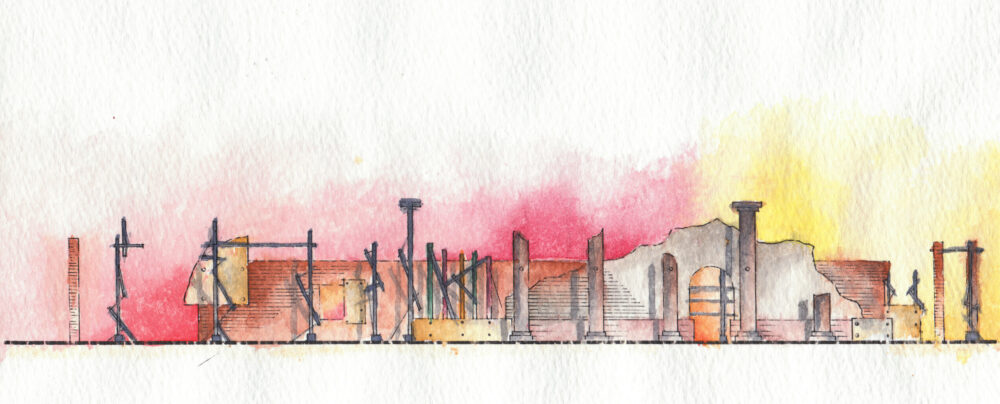At this year’s DEI Summit Community Assembly and Discussion, we are taking you on a journey through the heart and soul of hip-hop culture. We’re excited to explore the five pillars of hip-hop – MCing, DJing, breakdancing, graffiti, and knowledge – as they relate to our commitment to diversity, equity, and inclusion.
MCing
Student Hip-Hop Cypher
Our event begins with the rhythmic and poetic art of MCing, where students will take the stage for a hip-hop cypher. This powerful showcase of talent will demonstrate the role of storytelling and self-expression in advancing DEI initiatives within our community.
DJing
Jamall Bufford – U-M Alumnus
The beats and tunes of hip-hop are an integral part of our culture. We are honored to have University of Michigan Alumnus Jamall Bufford spinning records as our live DJ. Get ready for an electrifying musical experience that will keep the energy high throughout the assembly.
Breakdancing
Element1 – U-M’s Breakdancing Club
Element1, the University of Michigan’s only breakdancing club, will grace the stage with their incredible moves. Through this performance, we celebrate the physical expression and creative freedom that are central to hip-hop.
Graffiti
Craig Wilkins’ Hip-Hop in Architecture
Graffiti is not just an art form; it’s a visual language that speaks to the essence of hip-hop. We are proud to present commissioned art by Associate Professor at the Taubman School of Architecture and Urban Design, Dr. Craig Wilkins. His artwork will be woven into the stage design, serving as a vivid representation of graffiti’s significance within hip-hop culture.
Learn about his work, Hip-Hop Park
The project revisits a 1994 proposal to develop a Hip-Hop Park on the near south side of Chicago. The site is the former home of the Chicago Coliseum, at the time a debris laden vacant lot where two partially demolished facades remained to mark the Coliseum’s passing. The project – an appropriation of space by the local youth as a place of recreation due to the lack of available open space in their community – demonstrates the application the following primary principles of Hip Hop architecture established in essays and books during and since: the palimpsestic, the adaptive and the performative.
The design original design authorized a place for the typical outdoor performances that occur regularly in this community, providing staging space for hip hop dancing, wall space for graffiti artwork (tagging) and portable vendor booths to serve as a hip hop community flea market. Providing for the specific spatial practices of a particular community, the palimpsestic qualities of the park erases the notion of vandalism and degradation and rewrites – in the same place – a narrative of validation and desire. Providing for not only the tangible interaction in various forms of creating and viewing the performance of everyday life (the economic, political, communal and physical exchanges) but also the tactile interaction with immobile objects (graffiti walls, speaker stands, vending booths) as well, the park acts as one large stage; a stage for the performance of life, concerned primarily with the creation of identity through the performance of music, by both musicians and audiences. Each of these constantly shifting groups are invited to perform in the park at specific locations (central and side stages, grass knolls, dance platforms, bazaar, etc.), but like the adaptive nature of hip hop culture, such spaces are easily and continuously transformed by the users as they continue to write and rewrite their identity in and on this space.
In revisiting the original design for a current proposal for the site, this proposal aims to illustrate how the principles that drove its original design are still applicable today. The area has experienced a good deal of gentrification – the incoming residents are younger, wealthier and whiter. Despite the original intent to provide a park space where impoverished African American residents might engage in specific spatial practices allowing them to create their own identity, this same park provides similar opportunities for the current and incoming residents to collectively create an identity as well, demonstrating the adaptability and palimpsestic nature of the work itself over time, income, race and class. In this manner, the park truly embodies the teleology of the musical genre itself, which began as a specific expression of impoverished African Americans and has grown beyond that limited understanding to become embraced by many and in the process, empowering and altering life opportunities for the better.

Knowledge
Esteemed Panel Discussion
Hip-hop has always been a platform for knowledge-sharing and critical discussions. Our Community Assembly features an esteemed panel discussion where thought leaders and experts will delve into the intersection of Critical Race Theory and hip-hop culture. This intellectual exploration will offer insights and perspectives to drive our DEI initiatives forward.
We invite you to join us as we celebrate the vibrant, diverse, and inclusive world of hip-hop at DEI Summit 2023. See you at the assembly!

